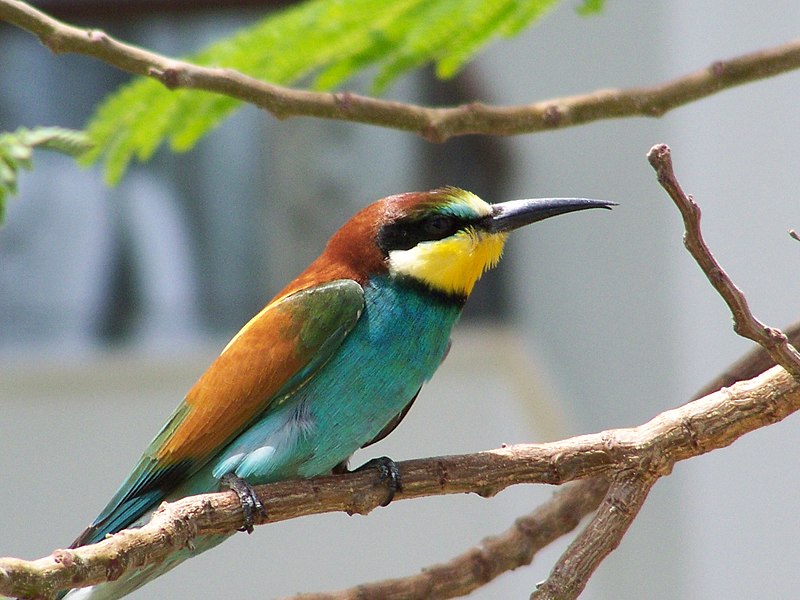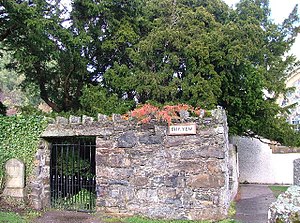Even in Spain, where it is a common, well-established breeding bird, the gorgeously colourful bee-eater (Merops apiaster) seems to have strayed out of the tropics. So imagine the impact when a pair arrived in County Durham in 2002 and proceeded to nest. Nevertheless, perhaps only in Britain could a couple of bee-eaters draw 15,000 people to see them. Two of the young successfully fledged. There have been other successful nesting attempts: in 1955 3 pairs spent the summer in Plumpton, East Sussex, two of which managed to rear 7 young between them. The most recent attempt to breed was on the coast of Dorset in 2006, but this time without any luck.
Photo from Wikipedia












